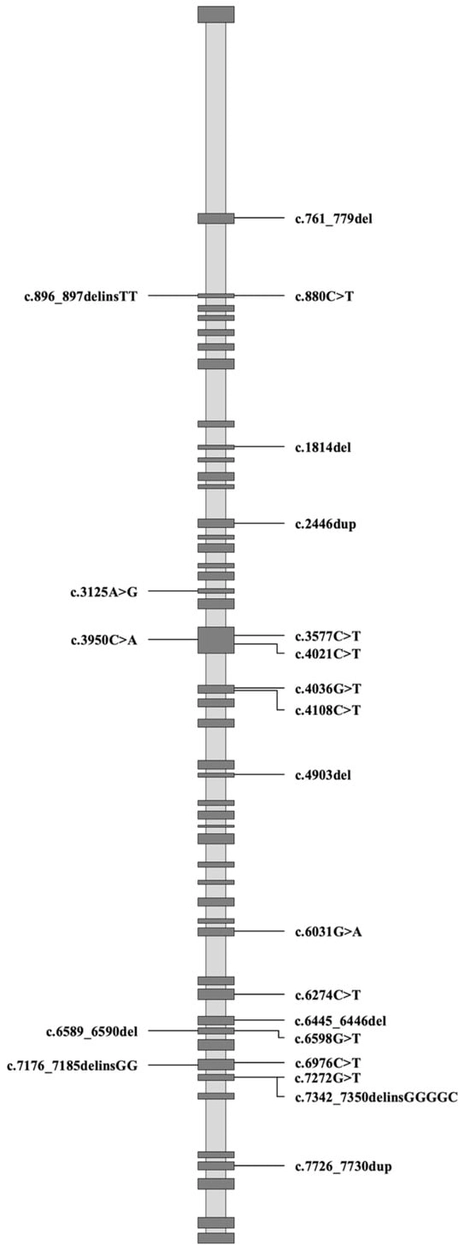- Article
Genetic and Clinical Characterization of FLNC Variants in Chinese Patients with Cardiomyopathy
- Guofeng Xing,
- Li Chen and
- Lizhi Lv
- + 6 authors
This study investigates FLNC mutations in Chinese cardiomyopathy patients. Background: Inherited cardiomyopathies, including dilated cardiomyopathy (DCM), hypertrophic cardiomyopathy (HCM), restrictive cardiomyopathy (RCM), and arrhythmogenic right ventricular cardiomyopathy (ARVC) are major heart failure causes. FLNC, critical for muscle structure, is implicated in myofibrillar myopathy and isolated DCM (3–4% cases) with ventricular arrhythmias. Missense variants are linked to HCM and protein aggregation. A cohort of 25 patients with pathogenic/likely pathogenic FLNC mutations (2022–2025, Beijing Anzhen Hospital) underwent whole-exome sequencing (WES) using IDT kit 1.0/Hiseq 4000. Variants were classified via the American College of Medical Genetics and Genomics (ACMG) guidelines. Clinical data (echocardiography, CMR, labs) and follow-up data (prognosis, meds, and family history) were collected. The statistics used SPSS (p < 0.05). The mean age was 38 ± 14.6 years (13 males). There were 25 FLNC mutations: 12 single nucleotide polymorphisms (SNPs), 5 deletions, 2 duplications, and 3 deletion-insertions, classified as 6 pathogenic, 16 likely pathogenic, and 3 variants of uncertain significance (VUS). Diagnoses: 24% dilated cardiomyopathy (DCM), 8% hypertrophic cardiomyopathy (HCM), and 4% left ventricular non-compaction. Nonsense mutation carriers exhibited significantly higher tricuspid regurgitation prevalence compared to frameshift mutation carriers (6/9 vs. 2/10; p = 0.04). Echocardiography revealed reduced left ventricular ejection fraction (LVEF) (41.5 ± 14.1%), with statistically significant differences in fractional shortening (p = 0.024) and aortic root diameter (p = 0.028). Pedigree analysis confirmed that a frameshift mutation (LP) co-segregated with familial DCM and was associated with severe phenotypes, including sudden cardiac death. Furthermore, nonsense FLNC mutations correlated with increased tricuspid regurgitation severity, smaller aortic root dimensions, and reduced pulmonary artery flow velocity.
12 December 2025





